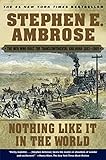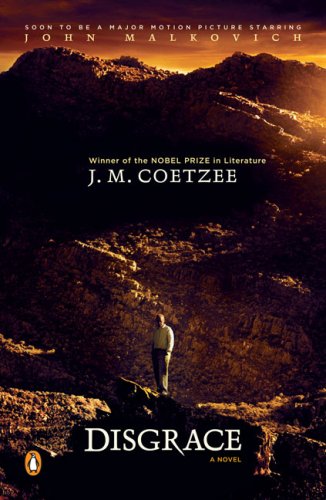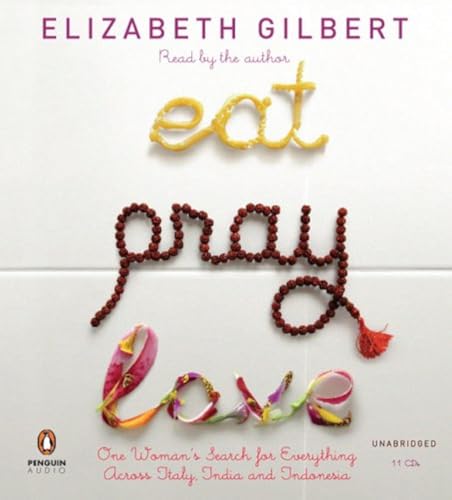A recent Millions essay by Michelle Huneven got us thinking: much hay has been made of how various print and digital platforms affect reading practices, but what about setting? Where you do your reading, and how much unbroken time you can give to it, will arguably shape your experience far more than does the difference between screen and page. And as cable and the web colonize our homes, it seems to us that the best reading is increasingly done in transit – for better and for worse. We’ve read pieces of War and Peace on the DC Metro (tough) and half of Anna Karenina in a single gulp on a night train through Tuscany (sublime).
By way of starting a conversation about the ideal marriage of text and transportation, we’ve asked our contributors and our Facebook group to make recommendations for three modes of transportation: Planes, Trains, and Automobiles. “Planes” should be self-explanatory; “Trains” comprises commuter rail (and buses) as well as longer distance trips; and “Automobiles,” perforce, centers on audiobooks, podcasts, and works read out loud by those not behind the wheel. Contributor responses appear first, followed by selections from the Facebook response. We invite you to add your own in the comments section or via twitter (using the hashtag #roadbooks). Bon voyage!
Planes
Sonya: While traveling far from home, I like to give myself over fully to a changed perspective, leaving my customary myopia behind as much as possible; The Economist is my preferred reading. The robust “World” and “Business” sections in particular knock me off my precious literary perch, which can be awfully refreshing.
Kevin: My criteria for a plane book are two: I want it to be fast-paced, and I want to be able to finish it, if not by the time I touch down, then at least during the return flight home. I’ve never had a better plane reading experience than Boston to Los Angeles, 1994, The Hunt for Red October.

 Edan: When flying, I always want something short enough to read cover-to-cover (in addition to a novel, a fashion magazine or gossip rag, and a book of jumbles, crosswords, or soduku). On my last few flights, I’ve brought a volume from Melville House’s Art of the Novella series. I’ve written about Bonsai by Alejandro Zambra here. I can also recommend Customer Service by Benoît Duteutre, about a man with cell phone issues who just wants help from a goddamned human being. It’s an appropriate read for when you’re flying through the air in a magical bullet, and you’ve just been forced to pay for a bag of peanut m&ms (a.k.a., dinner) with your credit card because cash is no longer accepted.
Edan: When flying, I always want something short enough to read cover-to-cover (in addition to a novel, a fashion magazine or gossip rag, and a book of jumbles, crosswords, or soduku). On my last few flights, I’ve brought a volume from Melville House’s Art of the Novella series. I’ve written about Bonsai by Alejandro Zambra here. I can also recommend Customer Service by Benoît Duteutre, about a man with cell phone issues who just wants help from a goddamned human being. It’s an appropriate read for when you’re flying through the air in a magical bullet, and you’ve just been forced to pay for a bag of peanut m&ms (a.k.a., dinner) with your credit card because cash is no longer accepted.
Garth: Last summer, en route to Hawaii, I read most of Gay Talese‘s Thy Neighbor’s Wife. If I say that I wasn’t even tempted to look at The Real Housewives of New Jersey (on a continuous loop on my back-of-seat TV), it’s not to slight Jacqueline or Dina, but to indicate how engrossing and provocative I found Talese’s exploration of sex in America.
Anne: For the nervous flyer (like myself), who wants to forget they’re in a fuselage for the duration of the flight, Lucy Grealy’s memoir Autobiography of a Face offers a gripping and unsentimental account of her childhood bone cancer and living with the consequent facial disfiguration. The book can captivate for the time it takes to cross an ocean – even, in my case, the Pacific.
Emily W: My fear of flying makes reading when skybound a rare pleasure. For me, it’s usually the iPod, cocktails, and a Vogue or a Harper’s Bazaar. The one book that managed to suppress my fear of death in the sky for five hours was J.M. Coetzee‘s Disgrace, which I read from cover-to-cover on a red-eye from San Francisco to DC.
Max: Plane rides are perfect for magazines, especially the New Yorker. The freedom to work through an entire issue in one sitting feels like a luxury, even if the leg room is lacking.
Amir Hother Yishay: I read my first Murakami on a transatlantic flight, Kafka on the Shore; a magical experience. Also, White Teeth by Zadie Smith.
Becky Donahue: On one flight to Germany, I could not put down The Devil in the White City… wonderful. Another great plane book was the biography of John Adams by David McCullough.
Trains
Anne: Amy Hempel’s Collected Stories offer enchantments brief enough for daily a commute, but the collection provides a cornucopia of word play and eclectic tales to occupy a longer haul. Plus, Hempel’s story, “To Those of You Who Missed Your Connecting Flights Out of O’Hare,” is a sure endorsement of the soothing lull of a long train ride.
Sonya: I like the Russians for train travel. When you’re watching the natural landscape – the largely uninhabited regions – of a country fly by in flashes, it just feels right to be reading stories that take place over the great land mass of Mother Russia. For a long trip, Dr. Zhivago; for, say, the DC-New York Metroliner, Chekhov’s “The Steppe” – in both cases, the land journey is also the journey of the soul.
Garth: The subway is feast or famine for me. The right book, and I’ll miss my stop; the wrong one, and I’ll read for half an hour without registering a single word. When I don’t have a New Yorker handy, Joan Didion – say, Play it as it Lays or Salvador – is perfect subway reading: lucid enough to let me in quickly; sophisticated enough to hold my attention; and discretely structured, for ease of exit.
Kevin: Typically before boarding at 30th Street Station in Philadelphia, I stop at a news kiosk and pick up the NYT and the WSJ. I enjoy having the time to read each front to back, and I like being able to change from news to business to sports and then back again. There’s also no doubt that I like the romance of a newspaper on the train: the economy fold, the crinkle of the pages mixed with the sound of the clattering tracks.
Emily W: On trains, I’m usually one for gazing out the window or striking up a conversation with a stranger, but this winter on the Northeast Direct from DC to Boston, I found Poets and Writers‘ January/February 2010 issue quite absorbing, particularly their “Literary Life” essays. I’m a bit of skeptic when it comes to writing about writing but P&W convinced me otherwise.
Edan: I never travel by train, but the next time – or, really, the first time – I get the opportunity to ride one across the country, or even state lines, I plan to bring along my copy of Selected Stories by Alice Munro. I will flip immediately to “Wild Swans,” a startling, discomfiting, and accurate account of an encounter with a stranger on a train. Munro writes: “Victim and accomplice she was borne past Glasco’s jams and Marmalades, past the big pulsating pipes of oil refineries.” I’d like to read that sentence as another landscape glides by my own train car window.
Max: There’s something about taking a longer train ride that puts one in the mood for adventure. When I was younger, I read Fear and Loathing in Las Vegas on a train ride from Washington D.C. to New York and emerged from Penn Station feeling pleasantly addled and ready for a night on the town.
Amir Hother Yishay: I finished the last 200 hundred pages of A Storm of Swords, by George R.R. Martin, on a subway ride

 Jane Weichert: Nothing Like It in the World by Stephen Ambrose is an very readable story of the building of the first transcontinental railroad. It was built by the immigrant Chinese and Irish and gives an understanding of the brutal conditions under which they worked. Last Train to Paradise by Les Standiford is a spell-binding tale of the last of the privately financed infrastructure projects undertaken by larger-than-life 19th century businessmen. Here Henry Flagler races against his own mortality to complete a railroad from Jacksonville to Key West, with the final run south from Miami requiring herculean engineering, management, and financial resources.
Jane Weichert: Nothing Like It in the World by Stephen Ambrose is an very readable story of the building of the first transcontinental railroad. It was built by the immigrant Chinese and Irish and gives an understanding of the brutal conditions under which they worked. Last Train to Paradise by Les Standiford is a spell-binding tale of the last of the privately financed infrastructure projects undertaken by larger-than-life 19th century businessmen. Here Henry Flagler races against his own mortality to complete a railroad from Jacksonville to Key West, with the final run south from Miami requiring herculean engineering, management, and financial resources.
Becky Donahue: Short stories are wonderful…just finished reading Too Much Happiness by Alice Munro. Podcasts…Slate does a great job and lots of content to choose from. My new favorites are Spilled Milk and The Moth.
Automobiles
Sonya: Once weekly, I drive two hours each way – prime audiobook time. “As read by the author” is often a great way to go when choosing nonfiction in particular. I recommend Elizabeth Gilbert reading Eat, Pray, Love; Anne Lamott reading any of her memoirs; Helene Cooper reading The House at Sugar Beach; and, my favorite among these, Dreams From My Father. The author was allowed much more range of expression back in 2005 when he recorded it, and it’s a rare experience hearing a future president do Kenyan accents and urban “Negro dialect” (ahem) and using the f- and n-words. [Ed.’s note: for the latter, we also recommend the Lyndon Johnson tapes.]
Anne: It’s rare that I travel by car these days, and even rarer that I find myself behind the wheel, but when I do, I like to listen to In Their Own Voices: A Century of Recorded Poetry. Listening to poems, like songs, lets me internalize their rhythms and cadences. This collection features a wide range of twentieth-century poets reciting their own poems, from Sylvia Plath’s contemptuous “Daddy” to Gertrude Stein’s playfully repetitive “If I Told Him: A Completed Portrait of Picasso.”
 Emily W: With audiobooks, it’s all about the reader; audio samples are essential to choosing a good recording. On recent car trips, my husband and I have found Huckleberry Finn and The Da Vinci Code particularly entertaining (in the latter case, guffaw-inducing) because the readers were so excellent at accents, genders, and dialects. And I have extremely fond memories of listening to Larry McMurtry‘s Anything for Billy with my parents and sisters on a childhood drive from Virginia to Massachusetts.
Emily W: With audiobooks, it’s all about the reader; audio samples are essential to choosing a good recording. On recent car trips, my husband and I have found Huckleberry Finn and The Da Vinci Code particularly entertaining (in the latter case, guffaw-inducing) because the readers were so excellent at accents, genders, and dialects. And I have extremely fond memories of listening to Larry McMurtry‘s Anything for Billy with my parents and sisters on a childhood drive from Virginia to Massachusetts.
Kevin: Audiobooks are not foolproof. A couple years ago I tried to listen to Cold Mountain on a road trip; between changing lanes, counting out toll money, and generally trying to stay alert, I found Charles Frazier‘s slow, somnolent reading impossible to follow. These days my voices of choice are David Sedaris (yes, please, Santaland Diaries one more time) and Garrison Keillor, or anyone else working in short-form comedy.
Garth: Though my wife and I like to read aloud to each other on long trips, The Lannan Literary Foundation podcasts are a recent discovery I’m pretty enthusiastic about: lengthy readings by writers like Deborah Eisenberg and Samuel R. Delany, followed by intelligent discussion with peers like Ben Marcus and Junot Díaz. We parcel them out like rest stops.
Max: A good travel audiobook can make even a drive from Chicago to New York seem something more than just endless fields and turnpikes. Most memorable was Paul Theroux’s account of his train trip from Cairo to Johannesburg, Dark Star Safari. The library is great for these.
Amir Hother Yishay: I always read on car rides, never having been a fan of audio books myself. One of my greatest car reading experiences would probably be reading One Hundred Years of Solitude over a two week trip from Toronto to St. Johns.
Miriam Parker: One of my most enjoyable long car rides included listening to Born Standing Up by Steve Martin. He reads it and is fantastic. I actually had to stop the car once to write down something brilliant he had said or else I would have caused a huge accident on I-40.
Becky Donahue: Firstly I love audio books. I re-read (or listened to) Lovely Bones. Bel Canto (Ann Patchett) is a good audio book. And anything from Neil Gaiman…brilliant.
Christine Magee: Commuting in and out of the city on a regular basis last year was made palatable by listening to Carson McCullers, The Heart is a lonely Hunter. The fact that the narrative transported me to a different place and time made it the perfect choice. It got to the point where I was looking forward to sitting in traffic so I could hear more! This wonderful book full of tension and struggle made my daily commute seem like a breeze!



















